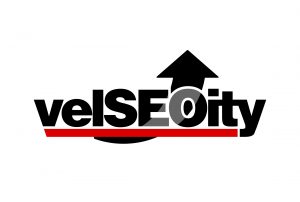An image says a thousand words and if the ones in Google Images or even worse the carousel in the main SERPs showcases on your don’t want, then that’s a big problem.
We all have a past and unfortunately unwholesome images relating to it appear when people search for us or our brand name. This can be used for mugshot removals and other negative pictures can be done and is a must if you want to protect your online reputation.
Prevention is better than cure. Protecting your images, especially if you’re a brand is an imperative. Take the case of Greggs, who didn’t do just this and ended up with an offensive logo in their knowledge graph. Images need protection and ensuring the ones you have are set up right ensures this.
How to Rank Images in Google and Control your Reputation
Are you looking for a way to lower the likelihood of unsavory photos from college from showing up in Google Images? Or maybe you are looking for a way to increase the positive images which show up so that you can gain more control over your specific personal brand.
Regardless of what you are trying to achieve, here is more information to help you get started.
In this article, I have provided a blueprint which will improve photos and images which show up when it comes to specific keywords (for example, your name). The basic processes involved in image optimization is very similar to search engine optimization, yet there are a few important differences.
Image File Name
As shown above, the File Name involves a very basic description of the image which is searchable. Make sure you make this name count.
Image Size
The file size of an image that is overly large will impact the time that the page takes to load. While reducing file sizes does not necessarily mean that you are sacrificing the quality of the image. There are methods to strip the data that is unnecessary and today there are various online tools you can use to assist you in optimizing your images that you use on your website.
Image Format
When it comes to images the correct format does not exist. It will depend on the type of images you would like to use and how you are planning on using them. However, we do recommend that you:
- Use JPEG for larger illustrations or photos, which will give you better results when it comes to clarity and colors, along with a file size that is relatively small.
- Use PNG when you would like to preserve the background transparency.
- Use SVG for icons and logos. With the assistance of JavaScript or CSS, you are able to manage your images in an SVG format. This means resizing them without losing the quality of the image.
Alt Tags
The Alt tags are HTML attributes that are used for describing images and are also used as the replacement to the image when it isn’t displayed or it does not render. For instance, this text would appear on the screen readers for people that are visually impaired, or when an image is disabled in the browser, or if the image cannot be decoded. The Alt tags are alternate displays of text which replaces the image. Below is an explanation that is more technical by Yoast, on the right way to use the Alt tags in order to identify images.
Captions
Captions are generally the description or title which is displayed alongside the image.
Descriptions
Descriptions are a field that allows for full explanations of your images, which can also offer added details which includes links. The description is displayed when the image on your site or in a post when someone clicks on it and it then opens in a new window.
Wraparound Text
Google with determine the relevance of an image in association to the search results in context with everything else that is around them which includes other images, text content, the page URL, page title, and image sitemaps. It is important that all these elements are optimized and make sure that all your page-messaging is consistent and unified.
Anchor Text needs to include the correct usage of keywords that are relevant in your links.
Use Inbound Links
The Inbound Links need to contain the right anchor text along with the inbound link numbers that come from the different domains along with higher Page Rank (PR) counts towards your overall rank.
Host Images on a Root Domain
The Images Hosted On Root Domain will score a rank that is higher compared to the images that are hosted on other servers or free servers.
Image Engagement
This one is self-explanatory. The images that receive more views and clicks usually receive a lot more love when it comes to Google.
Syndicate It
Take your images and syndicate them across the image-sharing websites. This will include Picassa, Wikis, Flickr, and more. Make sure you link them back to your original images.
Outbound Links to Related Content
This should only contain content that is highly-related which will assist the searcher to locate the exact content that they are searching for. In other words, the related keywords and posts in your content that contain links to explanations of the keyword terms will help you to rank higher.
Avoid using Stock Images
They usually appear insincere and unreal, and they generally lack that personal touch.
Implement Structured Data When Possible
Google Images supports data markups that are structured for videos, products, and recipes.
When adding structured data into the webpage’s HTML, the results for your images can become richer. Added pieces of information which are displayed with your images often promotes more visitors and clicks to your website.




